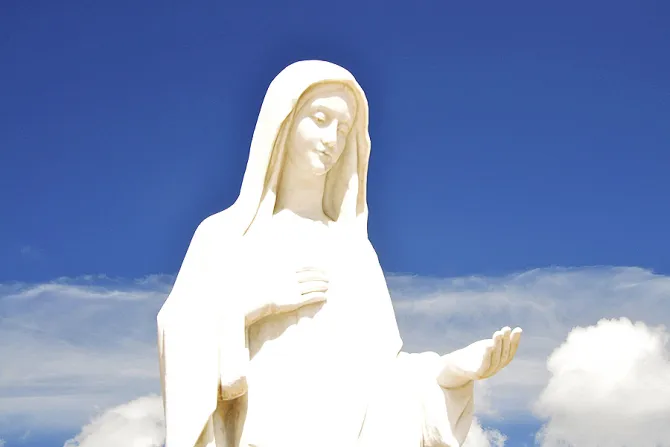Rome, Italy, Jun 25, 2015 / 11:13 am
If reports in Italian media outlets are to be believed, the Congregation for the Doctrine of the Faith met June 24 to discuss the alleged Marian apparitions in Medjugorje, reaching the conclusion that they are inauthentic, but recognizing the site as a place of prayer.
On Thursday, the Vatican watcher Gianluca Barile wrote that "for the Congregation of the Doctrine of the Faith, in fact, the 'apparitions' do not have any supernatural character; therefore it is forbidden to the faithful to participate in the 'ecstasy' of the six 'seers', and the latter are prohibited from divulging the texts of the messages they supposedly receive from the Madonna."
According to Barile, the negative judgement regarding the apparitions is based on inconsistent theological messages; the visionaries' economic interests in the site; and their disobedience to the local bishop.
However, the Vatican has not confirmed the reports – which have also appeared in Il Giornale – that this month's meeting of the Congregation for the Doctrine of the Faith discussed Medjugorje.
According to the reports, the congregation did acknowledge Medjugorje as a place of prayer and devotion that can be visited by pilgrims for prayer, though without contacting the supposed visionaries or partcipating in their 'apparitions'.
The alleged apparitions originally began June 24, 1981, when six children in Medjugorje, a town in what is now Bosnia and Herzegovina, began to experience phenomena which they have claimed to be apparitions of the Blessed Virgin Mary.
According to these six "seers," the apparitions contained a message of peace for the world, a call to conversion, prayer and fasting, as well as certain secrets surrounding events to be fulfilled in the future.
These apparitions are said to have continued almost daily since their first occurrence, with three of the original six children – who are now young adults – continuing to receive apparitions every afternoon because not all of the "secrets" intended for them have been revealed.
Since their beginning, the alleged apparitions have been a source of both controversy and conversion, with many flocking to the city for pilgrimage and prayer, and some claiming to have experienced miracles at the site, while many others claim the visions are non-credible.
In April 1991, the bishops of the former Yugoslavia determined that "on the basis of the research that has been done, it is not possible to state that there were apparitions or supernatural revelations."
On the basis of those findings the Congregation for the Doctrine of the Faith directed in October 2013 that clerics and the faithful "are not permitted to participate in meetings, conferences or public celebrations during which the credibility of such 'apparitions' would be taken for granted."
In January 2014, a Vatican commission completed an investigation into the supposed apparitions' doctrinal and disciplinary aspects, and was to have submitted its findings to the Congregation for the Doctrine of the Faith.
When the Congregation for the Doctrine of the Faith will have analyzed the commission's findings, it will finalize a document on Medjugorge, which will be submitted to the Pope, who will make a final decision.
Pope Francis visited Bosnia and Herzegovina earlier this month, but declined to stop at Medjugorje during his trip. During his return flight to Rome, he indicated that the process of investigation in the apparitions was nearly complete.


